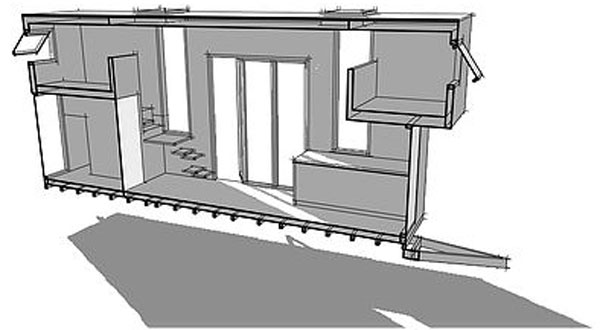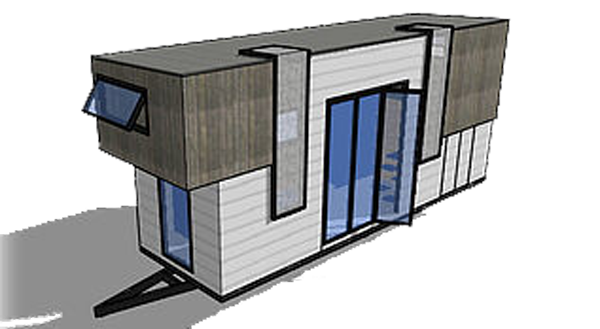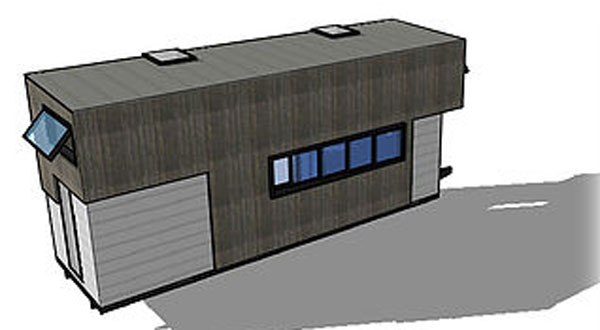We envision a peaceful and sustainable world, living in harmony with nature

Hempcrete is a bio-composite material – a mixture of hemp hurd (the woody core of the plant), lime binder (Tradical – natural hydraulic lime, aerial lime and hydrated lime) and water. The combination of these materials calcifies the hemp hurd and the chemical reaction forms a solid building material (hempcrete). The result is a light weighted, highly insulating material, acting as a great moisture regulator (breathable walls) and thermal mass.
Hempcrete is a non-structural material, compared to concrete, its compressive strength can range from 1MPa – 10MPa, pending on how much lime binder you add to your mix. Whereas residential grade concrete is 20MPa (by adding cement to the mix you can raise the MPa rating, but lose the breathability of the material). Building with hempcrete requires a structural frame, being of timber or steel. This low density material is resistant to cracking under movement, thus making it highly suitable for earthquake prone areas and mobile tiny house construction.
Hemp is an amazing plant, which offers a wide range of benefits to the environment and a vast number of different products (estimations of 50,000 across the building, food, cosmetic, textile and plastic industries). Through the lifecycle of the plant it extracts carbon dioxide from the atmosphere (1 ton of hemp = 2 ton of carbon absorbed – a standard 3×2 home at 150m2 has 11-12 ton of hemp). Once the hemp is made into a product it locks the carbon away for the lifecycle of the material, equating to a negative carbon footprint – lowering the overall carbon footprint for your home.
Industrial hemp is a different strain of Cannabis Sativa, containing very little THC (the psychoactive substance). Current regulations in Western Australia are that industrial hemp is required to have a THC level lower than 0.3% in order to be processed. The cousin of hemp, Marijuana, has a THC level of around 15% thus meaning you are unable to get high from industrial hemp.
Hemp is truly an environmentally sustainable material. A crop of industrial hemp will take 6 months to reach maturity before harvesting, plants being able to grow to 4-5m high. Hemp can yield between 10-12 tonnes / hectare, which when processed will equate to 30% hurd and 70% fibre (3-5 hectares will comfortable grow the hurd to build a 3×2 home with 250mm thick walls). Hemp is resilient to pests so there is no need for herbicides or pesticides. The root system aerates and puts nitrogen back in to the soil, making it an ideal crop rotation. Hemp requires a high level of water to grow with out spiking the THC level. When the plant is stressed from lack of water it boosts the THC. To avoid the spike, hemp requires between 3-4 mega litres / hectare to grow and thrive (Cotton requires 7-8 mega litres / hectare).
We live in a world where there are endless possibilities to what we can use to build and create homes with. The mycelium is one of the oldest fungi on earth and there are theories that life on earth was established through the micro organisms of this species, being able to adapt and thrive in many different substrates to continue their growth. There are thousands of varieties of fungi which all play different roles in our ecology, nutrition and now building.
Our mushroom bricks are made in the Southwest WA in Forest Grove, where our climate and environment are ideal for the healthy growth of the fungi. We naturally have around 15 native species of fungi on our 65acre block which we know of – no doubt many more in the undergrowth of the forest, as the mycelium are the interconnecting communications network for our forests and the living organisms beneath.
We are using straw, sawdust, hemp and other natural materials to form the base of the brick. The fungi are then injected into the substrate to colonise and form a network of thin, root-like fibres called mycelium. After the fungi has colonised our pre-formed bricks (usually taking around 5 days to reach this level) we bake the bricks at a low temperature to stop the fungi continuing to grow. During this process the mycelium has spread these fibres which act as a glue based adhesive through the substrate which bonds everything together. Leaving a strong, breathable healthy brick which has a positive carbon footprint. We use rocket mass heaters in an earth kiln to achieve a natural, efficient heating process to bake our bricks.
Scientists have trained and grown fungi to start breaking down and composting plastic from our land fills, water ways and forests. They have established mushroom plastic which can be moulded into any form – reducing our plastic consumption. Fungi which you can grow in two weeks that makes leather – it takes two years for a cow to mature to then produce leather.
Like Hemp, mushroom bricks are non structural and are required to be constructed in conjunction with a structural frame.
Straw-bale construction is another great natural way to build. The straw is a bi-product of wheat, rice, rye, oats and other grains. After the farmer has harvested the seed, they are left with the dry stalk which can be used for animal bedding, composting, landscape supplies and most importantly building. In a lot of cases the stalks are burnt and wasted as it is easier and faster for farmers to plant their next crop. This means you can get straw for a low price! Straw can be easily mistaken for hay but they are very different – hay being cut green from livestock feed as a living plant and straw is cut dry and no longer living.
This building technique was established in the late 1800’s – early 1900’s as a high insulating, low cost building material. In the 1990’s they passed a straw bale construction building code to ensure the safe installation of this material. There has been a range of renders applied to this material to bond and seal the straw – an earthen render, lime render and a cement based render. This can then be sealed with a lime wash paint, natural sealer or left raw.
Straw bale construction has many benefits and advantages over other building methods;
- Low cost of material
- A low skill level to be able to install it
- Has a high acoustic value
- High insulating as the bales range from 300mm – 450mm in width, which can create an R value greater than R10
- Is a breathable material, which is resistant to fire, vermin and decay
Straw bales have good structural capabilities and buildings have been constructed up to three stories high without a structural frame. To comply with Building Codes of Australia (BCA) you are required to build with a timber or steel frame.
The main risks of straw bale as many other types of building is keeping the moisture out. If moisture gets into the straw bales this can cause the product to rot and decompose, causing the insulation to lose its high benefits and then raise the risk of mould. This can be avoided by creating larger eaves around your home, an air-gap to regulate the moisture and appropriate rendering and sealing techniques.
Rammed Earth is an ancient construction method by ramming a mixture of aggregates, sand, silt and a low percentage of clay, into pre-formed formwork. There are different methods around the ramming of the earth pending on what is available and accessible to you. You can use wooden poles, wooden base plate with a steel handled ram (star picket rammer) and conventionally a pneumatic rammer which is the optimal method to comply with the compressional strength required to meet BCA requirements.
The traditional earth mix has been developed over the years to add cement to stabilise, increase strength and durability of the earth and a waterproofing agent to limit moisture penetration. As we develop our New Earth systems we have found natural polymers to stabilise the earth and waterproof the mix.
There are a range of finishes like other natural building methods you can apply to finish your rammed earth, natural sealers, lime wash paints, lime render or an off form raw look. It is important to keep the wall air-permeable (breathable) to allow the heat and moisture to regulate.
Rammed Earth is an excellent thermal mass which has its benefits and disadvantages. During the year the earth stores heat energy from the sun which releases into your home. In the summer months this can over heat your home but in the winter months this is optimal to heat your home. By creating a passive designed house which can regulate and ventilate the heat energy, you can maintain a comfortable temperature all year round.
Mud Bricks are a similar mix ratio as rammed earth but there are many varieties which are used for different methods. In your earth mix you can add a natural fibre like straw, hemp and bamboo to add strength and minimise cracking. You can form your bricks with moulds or by using a brick press, then dry the bricks slowly in a well ventilated area – keep out of direct sunlight.
Once the bricks have cured, you will lay the bricks with a mud mortar mix consisting of fine earth with a low clay percentage. Depending on what mixture you choose to do for your bricks will depend on the mortar mix, adding cement, polymer or keeping it all natural!
Like rammed earth, mud bricks can be used as load bearing walls but with BCA regulation it is required to have a frame or structural columns to support the load of upper floors and your roof.
Environmentally mud bricks are another great material and if you choose to go with an all natural mix for your bricks and mortar, then your home can be composted after its life cycle!!



If you require any further information, please get in touch with us
